The Mail Bag brings us this rare program of a visit to John Barrymore’s Trophy Room thanks to Karl Holmberg!
Thanks, Karl!
— David DeWitt
Would anyone know how to watch this movie in good quality? I bought a dvd a while ago but was disappointed as it was very blurry and had the tcm logo. Who knows, maybe WB Archive will release it?
— Smordon Cluce
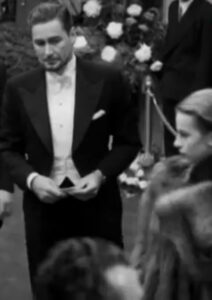
Dear Flynnstones,
here is a video clip about the Royal Command Film Premiere of “That Forsythe Woman“ from November 17 of 1949 in London with the late Queen Elizabeth II and her sister Princess Margaret exchanging glances with Baron Flynn the One and Only. m.youtube.com…
Enjoy,
— shangheinz
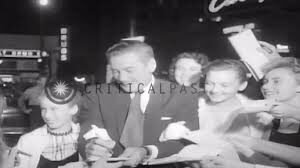
Dear Flynnstones,
here is Father Flynn, the perennial ladies‘ man.
Enjoy,
— shangheinz
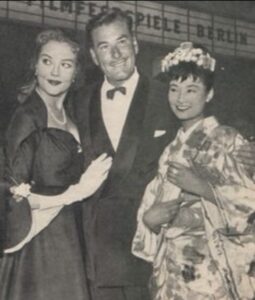
Dear Flynnstones,
this week saw the opening of the 72nd German Film Festival, the so called Berlinale.
Errol Flynn attended once in 1957 and was in full swing.
See for yourselves:
www.filmothek.bundesarchiv.de/video/584238…
Enjoy,
— shangheinz
The Adventures of Robin Hood; Released May 14, 1938
Quotes from Louella O. Parsons’ glowing review of The Adventures of Robin Hood
The Adventures of Robin Hood is the most exciting costume play of this or any other era. Cunningly combining melodrama, romance, and colorful adventure, it romps along at Twentieth Century speed, making us forget we are seeing legendary characters who lived in the swashbuckling of early England.
Robin Hood comes to us in the person of dashing Errol Flynn, whose performance tops anything the young Flynn has yet given to the screen.
There couldn’t be a lovelier Maid Marian than Olivia de Havilland.
Basil Rathbone gives one of his topping performances as Sir Guy of Gisbourne.
Claude Rains reaches new heights.
Ian Hunter is the perfect King Richard the Lionhearted.
You’ll like the kittenish Una O’Connor, the prankish Eugene Pallete, the hearty and lovable Alan Hale, the weak, spineless Sheriff of Nottingham played by the sterling actor, Melville Cooper, merry crew member Herbert Mundin, and Patric Knowles.
Much credit goes to that splendid director, Michael Curtiz, and William Keighley
The music, by Erich Wolfgang Korngold, is enchanting.
Costumes by Orry-Kelly are beautiful.
The photography, by Tony Gudio and Sol Polito, is poetic.
Perc Westmore, may I say, did a great job on makeup.
The Technicolor adds materially to the beauty of the picture.
…
Joe Mantegna, who sought and received a Hollywood Walk of Fame Star next to Errol’s, gives a Flynntastic interview about the greatness and importance of both Errol Flynn and The Adventures of Robin Hood. He is a true fan.
…
— Tim
March 7, 1953
Against All Flags at the Historic Madame Walker Theater in Indianapolis
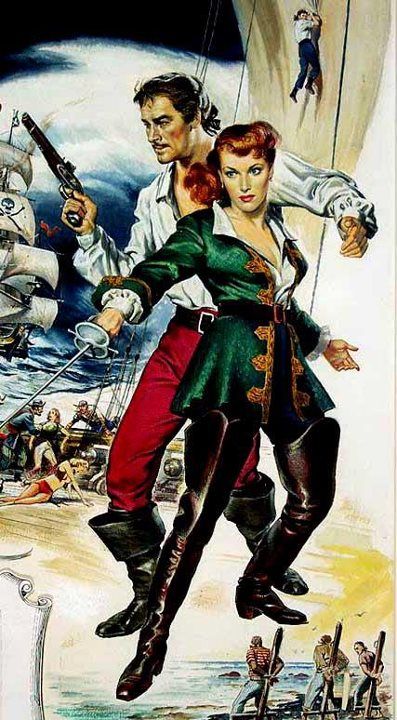
— Tim
On February 26, 2006, the American Society of Cinematographers (ASC) presented its Lifetime Achievement Award to Richard Kline. a prestigious honor presented annually to an individual who has made exceptional and enduring contributions to the art of filmmaking.
Richard Kline was born on Nov. 15, 1926, into a Los Angeles family that included three prominent ASC cinematographers: his father, Benjamin H. Kline, and two uncles, Sol Halperin and Philip Rosen. However, he said, he took up camera work at age 16 not out of any great love for the craft — his passion was surfing — but because World War II was raging, and his father believed such training would help him qualify for a camera unit when he was called to serve. He started at Columbia Pictures in 1943 as a slate boy on the Technicolor musical Cover Girl, and by the time he entered the U.S. Navy the following year, he had advanced to first assistant cameraman, spending two months in Acapulco filming The Lady from Shanghai. “Welles was brilliant, and here I was, this kid along for the ride.”
“In Acapulco, we used Errol Flynn’s yacht, The Zaca. Apart from a brief cameo, Flynn did not appear in Shanghai”
“Errol Flynn and Orson Welles were quite a pair. There was never a dull moment.” “We were on location down in Acapulco and it was a very wild time.” “Errol lent his yacht to Orson for the film. Errol himself served as the skipper.”
“Along with the rest of the crew, one of Kline’s responsibilities was to referee the nightly bar fights that would break out between Welles and Flynn after the two had spent several hours heavily “unwinding.””
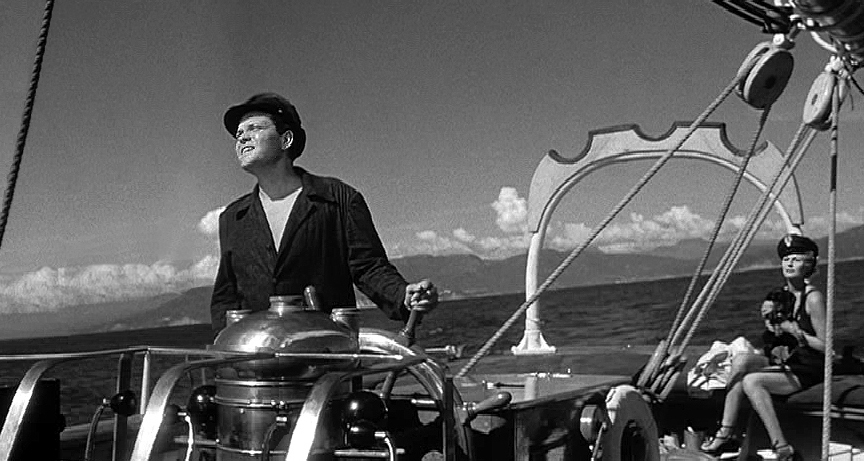
Orson, Rita and Chula
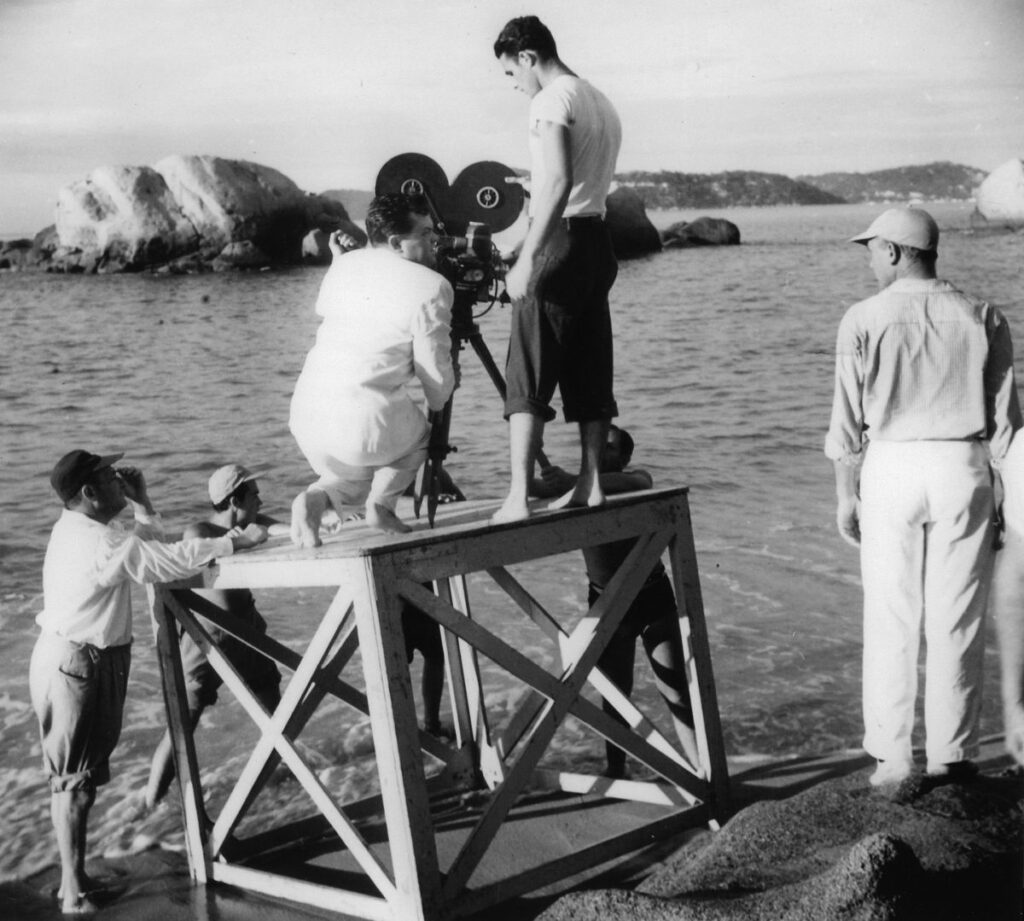
Orson and Richard Kline
In order to shoot the location sequences, a company of 50 Hollywood actors and technicians flew to Acapulco, along with 60 Mexican extra players and technicians from Mexico City. More than 15 tons of equipment were shipped from Hollywood, one order of six tons comprising the largest single air express shipment ever undertaken by a movie location company.
Scenes were filmed above and below decks, at anchorages in Acapulco Harbor, at Fort San Diego in Acapulco Bay, at Morro Rocks and other scenic spots, as well as at sea. A lavish new night club, Ciro’s, located atop the swank Casablanca Hotel in Acapulco, also served as a setting, as did the 25-mile stretch of white sand beach at Pied de la Cuesta.
The transportation of heavy sound and camera equipment through the tangled Mexican jungle was a major problem, but overcome by the sheer manpower of several hundred Mexican porters and canoe men. Sound trucks and generators were placed on native canoes lashed together to form barges, and then were floated through jungle-cluttered streams into shooting position.
“Shooting aboard the yacht was, from the space standpoint very difficult, and these scenes, as they appear in the picture, are necessarily cramped in composition — but this actually worked in favor of the overall effect because it produced an authentic atmosphere of crowded life aboard a small yacht.”
During filming aboard The Zaca, a long line of native dugout canoes anchored astern formed a bridge from the barge holding the generator so that electrical cables could be stretched for the camera and sound equipment.
Said Kline six decades later: ” It was the best assignment I ever had,”

(Left) On location in Mexico, Welles briefs his crew prior to filming a sequence. (Center) The Zaca is anchored in Acapulco Harbor. Astern are a line of barges over which electrical cable was stretched between the yacht and the generator boat. (Right) For a scene shot in the jungle streams of Mexico, the camera is mounted on a dugout canoe alongside the boat in which the principle players ride.
— Tim
Errol’s Cinematic Connection to One of the Most Consequential Events in American History – The Hanging of John Brown on December 2, 1959 – Which Resulted in the Election of Abraham Lincoln, the Civil War, and All the Race-Related Controversies and Conflicts that have Ensued in the United States, to This Very Day.
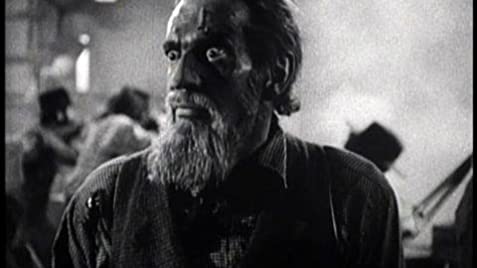
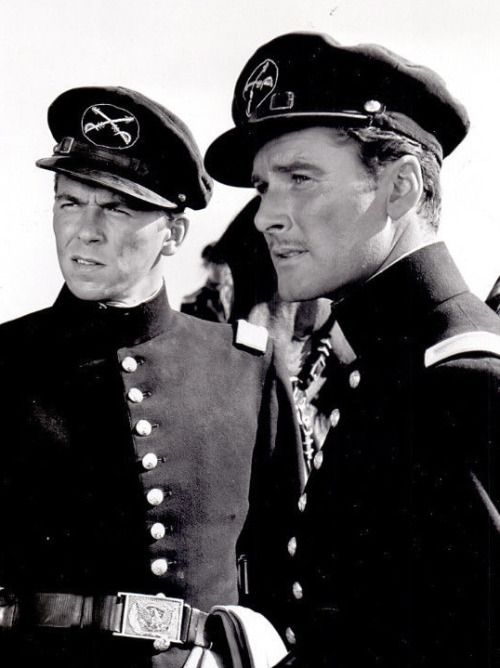
…
— Tim